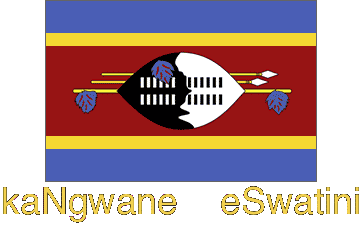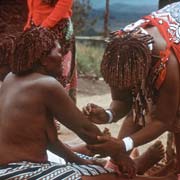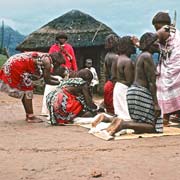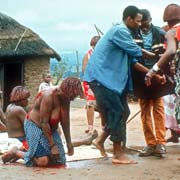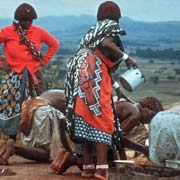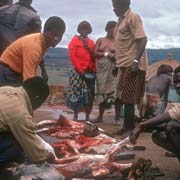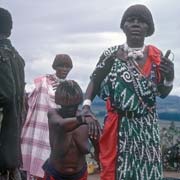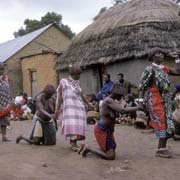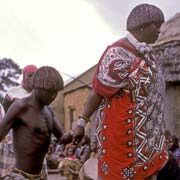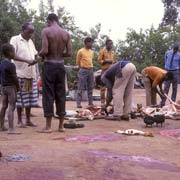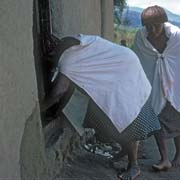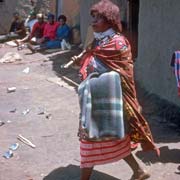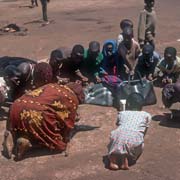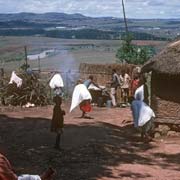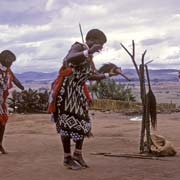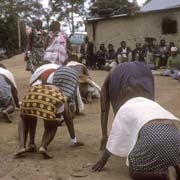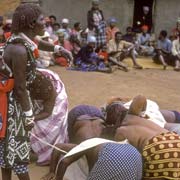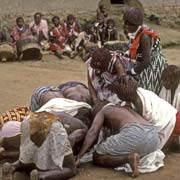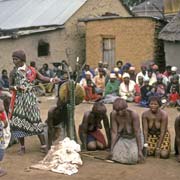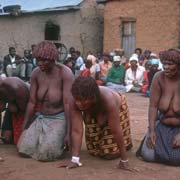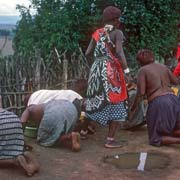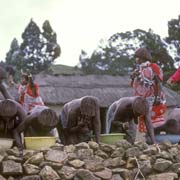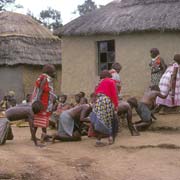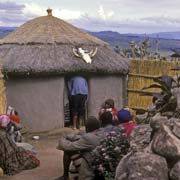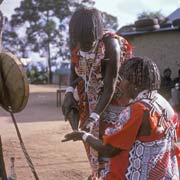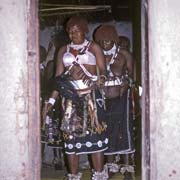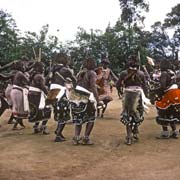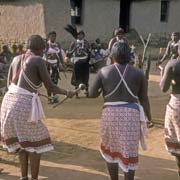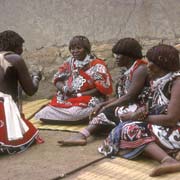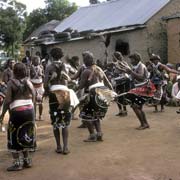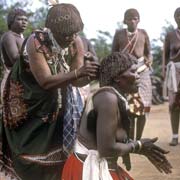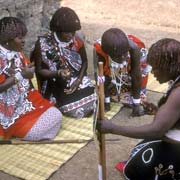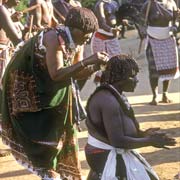Photos of an iNtfwasa graduation Ceremony in 1972 - Day 1, Swaziland
An iNtfwasa graduation Ceremony in 1972 - Day 1
The "sangoma" or diviner (sometimes, rather misleading, known by the rather pejorative term "witchdoctor") would have started life as anybody else but who, through dreams or visions that were interpreted as an indication that his or her "emadloti" (plural of "lidloti"), ancestral spirits, are calling him or her, had to become a healer. Although the "calling" is often resisted at first, it gradually becomes irresistible and he or, more often, she becomes a learner in the household of a senior sangoma. In Swaziland there are far more women tangoma than men.
you may then send it as a postcard if you wish.
The small homestead of Bethany, near Matsapha in central Swaziland was such a "school" where learner "tangoma" (plural of "sangoma") would undergo "kutfwasa", their training, guided by LaMabuza, a friendly lady who had about a dozen or more learners staying with her. During this time they had to observe various taboos: they were not allowed to quarrel, touch or shake hands with anybody and have sexual relations, among others. They would have to gather roots and make medicines from them, learn how to use them and there would be drumming in the "indumba", the small house where their bodies would be taken over by "emadloti", spirits. Each year a two day "kuphotfulwa" ceremony was held, finishing their "iNtfwasa" period, where the candidates had to undergo a series of tests and rituals that, when they passed, would make them fully qualified "tangoma".
The ceremonies had started with the candidates being treated with "umutsi", traditional medicines; each then had a goat placed on her back whose blood they had to drink after its heart was pierced. The goats were then butchered and small pieces of liver were placed on a shallow dish and one of the "bogobela" (senior tangoma) dragged it along the ground. The candidates, on hands and knees, ran after it, trying to eat it, fighting "like dogs" over it. This would give them courage (liver, "sibindzi" in the siSwati language, is a symbol of courage), so they would not to be afraid of even very sick people and by "fighting" they would show to be competitive to acquire customers. After this they had to drink "umutsi" medicine again and vomit it out to cleanse themselves, before being led to the "indumba", the hut they were staying in.
The candidate tangoma then dressed themselves in full regalia, black skirts, embroidered with small beads, in the "indumba" and emerged, in a light trance, on the plaza while large drums were pounded in the rhythm associated with the "emadloti" or ancestral spirits. They danced in a circle, brandishing short dancing sticks, and then jumped up on one leg for a few beats. While this was going on, the candidates were led, one by one, to LaMabuza, their teacher, and two other "bogobela" or senior tangoma to do an examination in "kuphengula" or divining: the gall bladder of the goat that had been killed for them has been hidden. The candidate, on her knees, would pose suggestions, rapid-fire, while flicking her fingers. Those suggestions were always answered with the same formula ("izwayi, 'ngoma, izwayi"...); but somehow she would divine where it was. She then jumped up, retrieved it and, as a sign of seniority, it was tied into her hair by one of the "bogobela".
Meanwhile, the drumming and dancing went on and then it was a "free for all" where every sangoma did divination in this way with the people who were sitting on the side; whatever they said, it was always answered with "siyavuma" (we agree) but, maybe from the tone, they could divine whether they were on the right track. Then, after a final dance, they retired for the night. Next: Day 2.
See also: iNtfwasa Ceremony - 1973, Video iNtfwasa Ceremony, 1973 - Day 1 and Day 2, and an explanation of the sangoma ceremonies.


